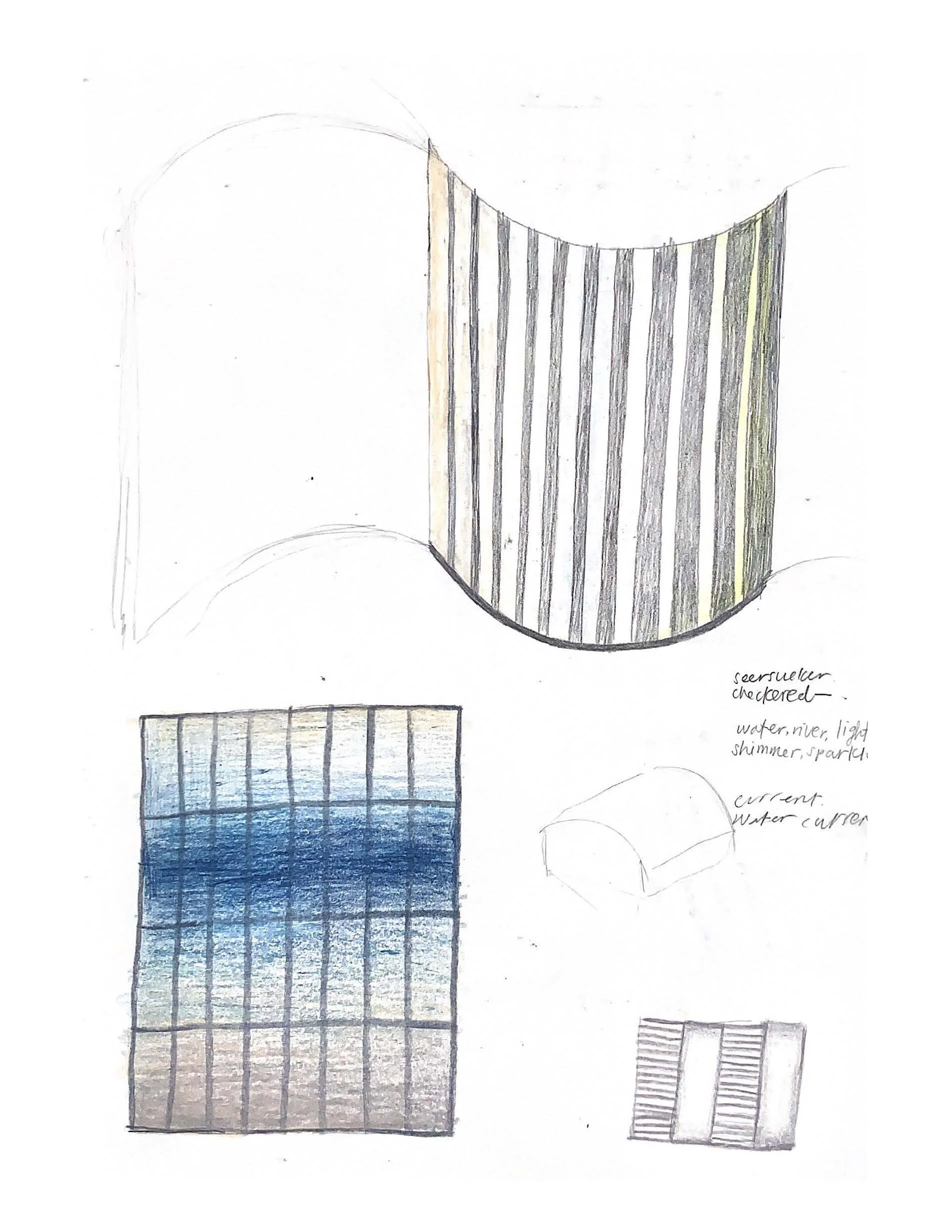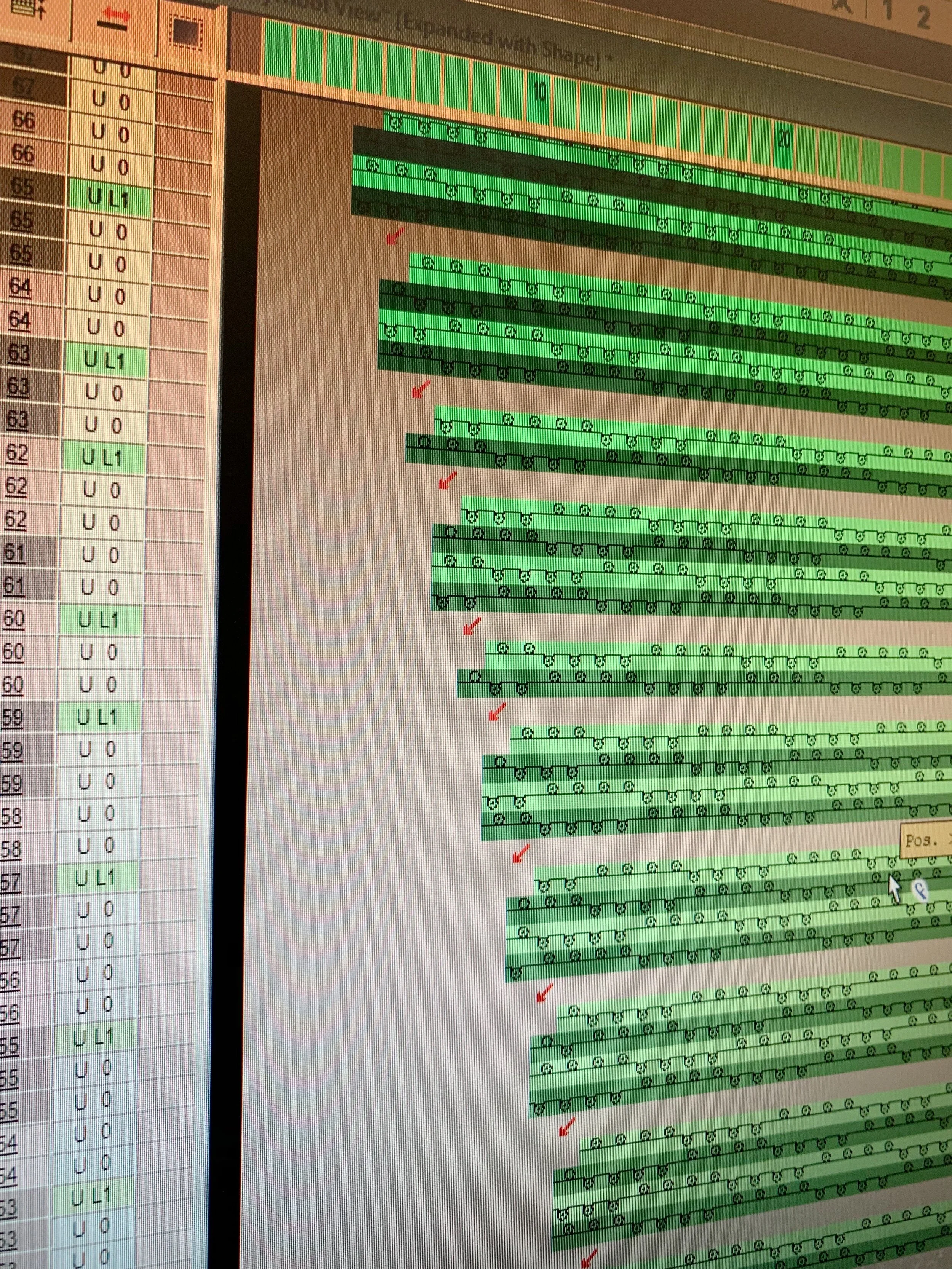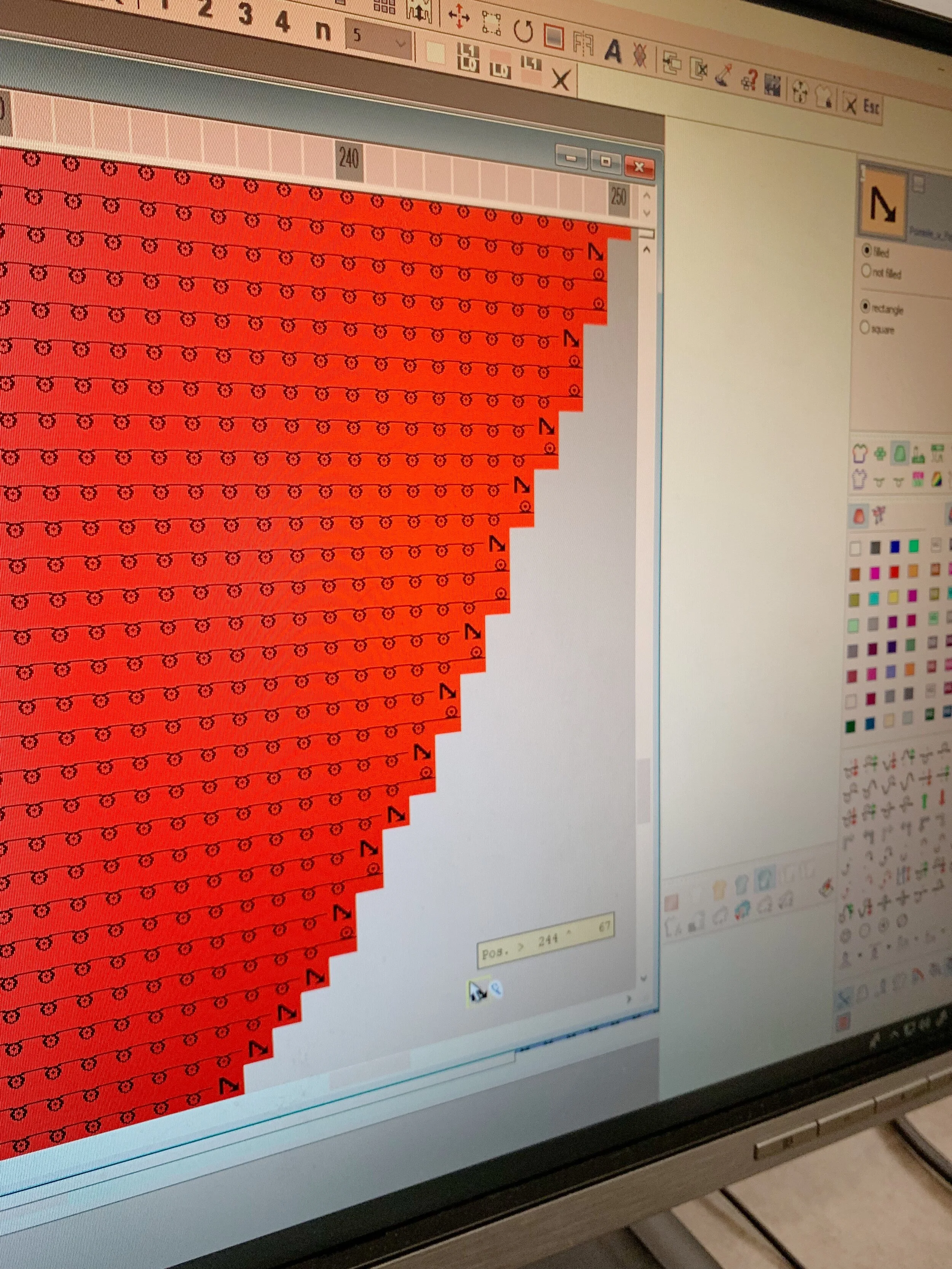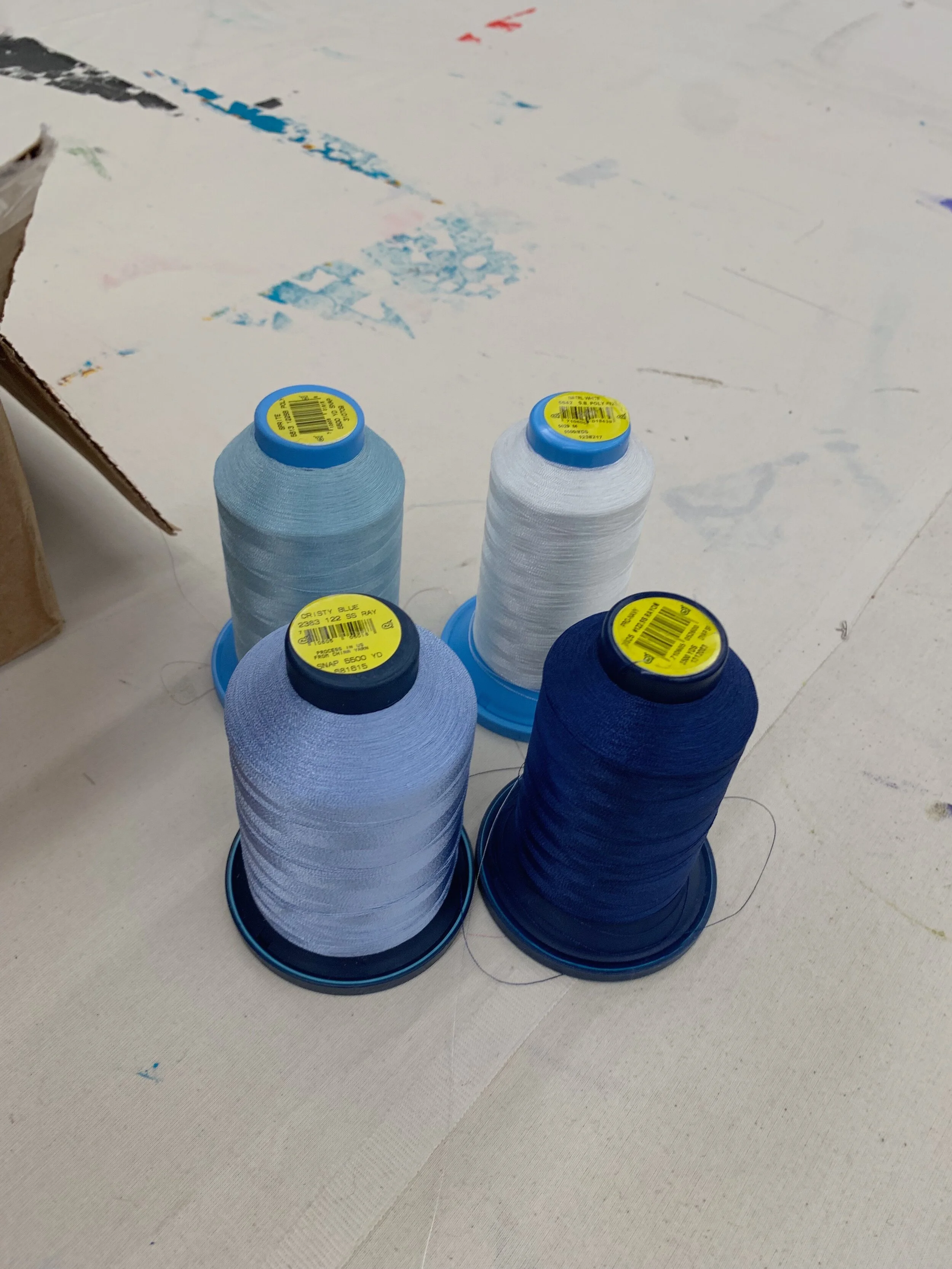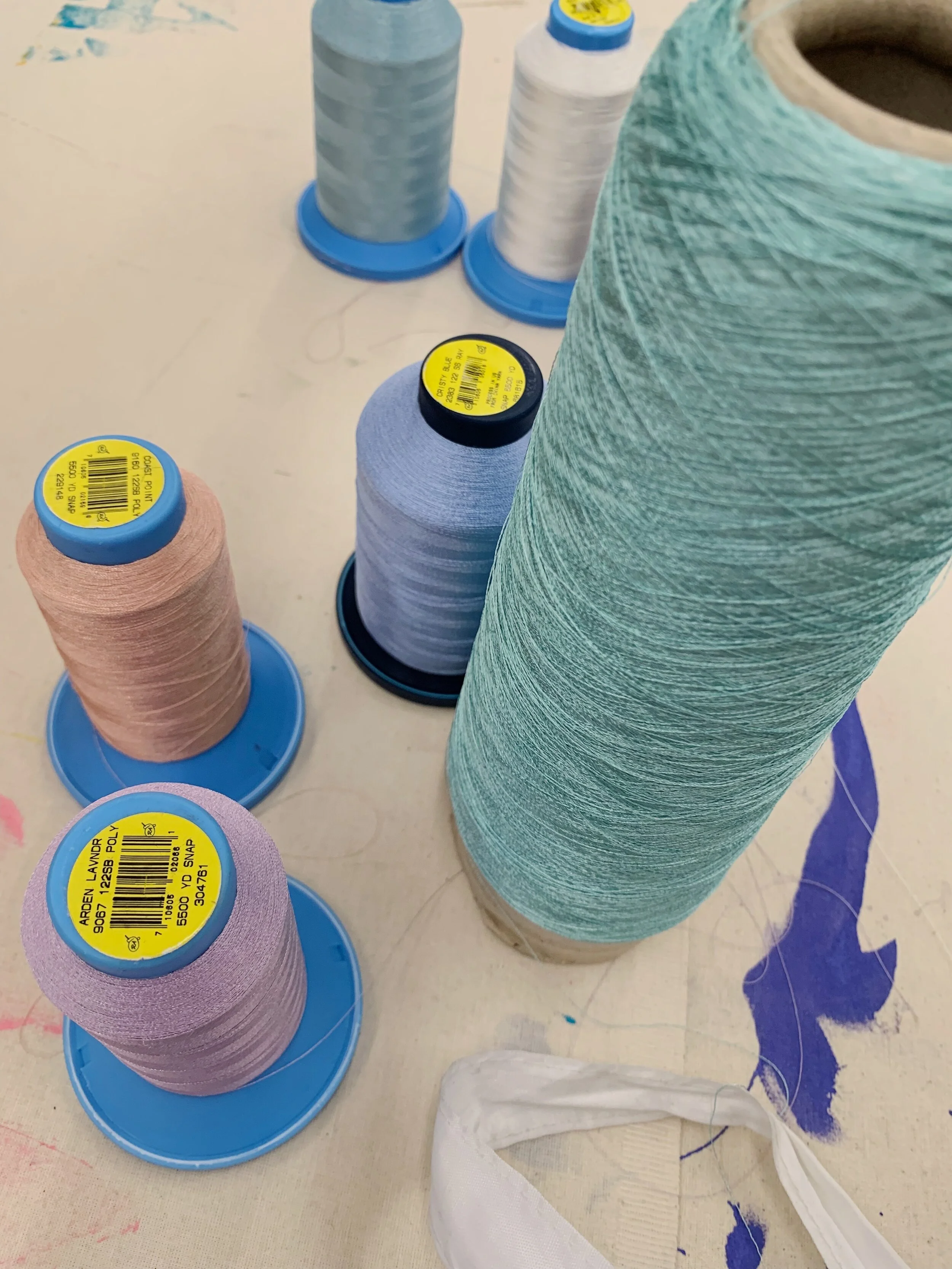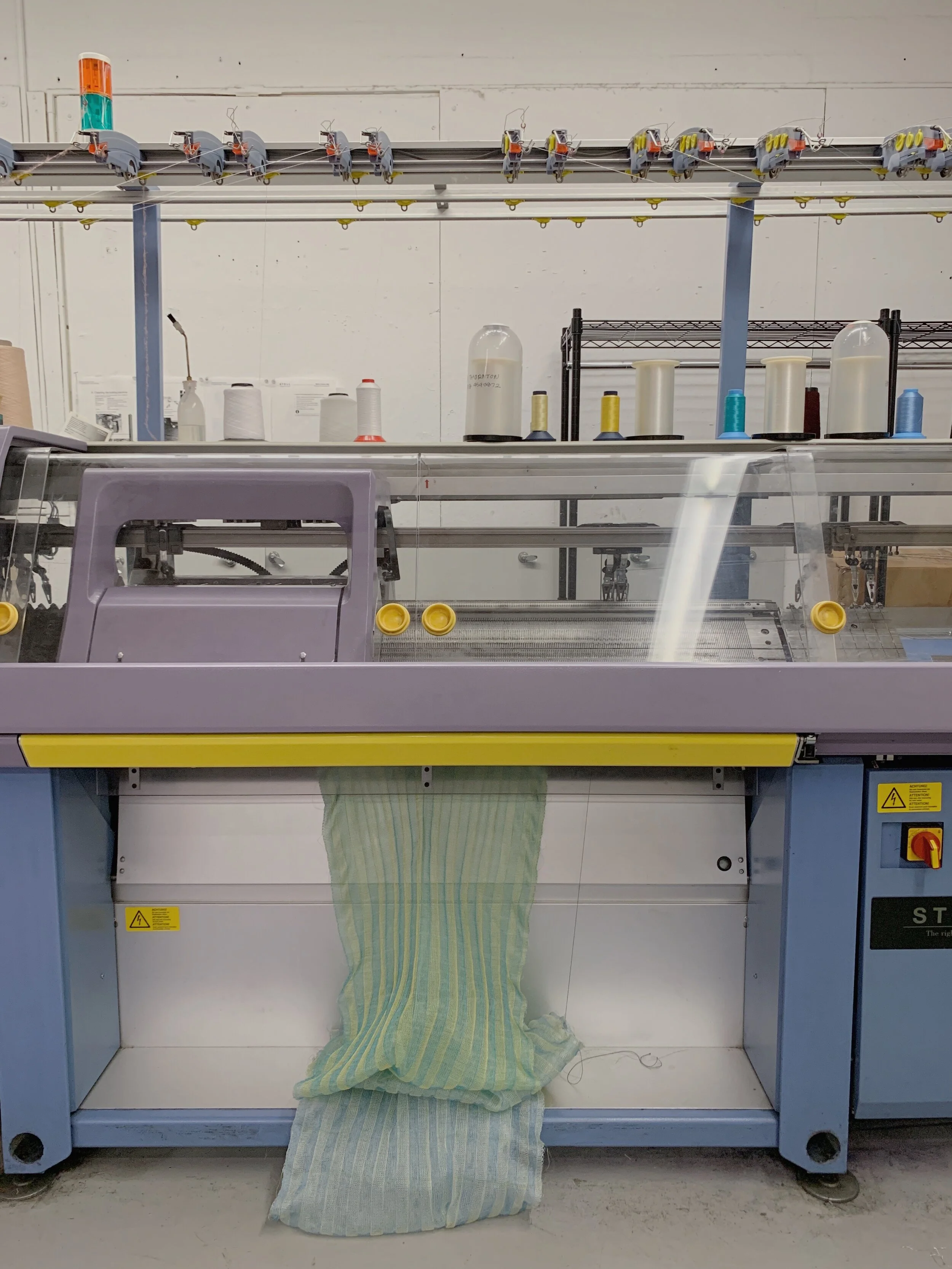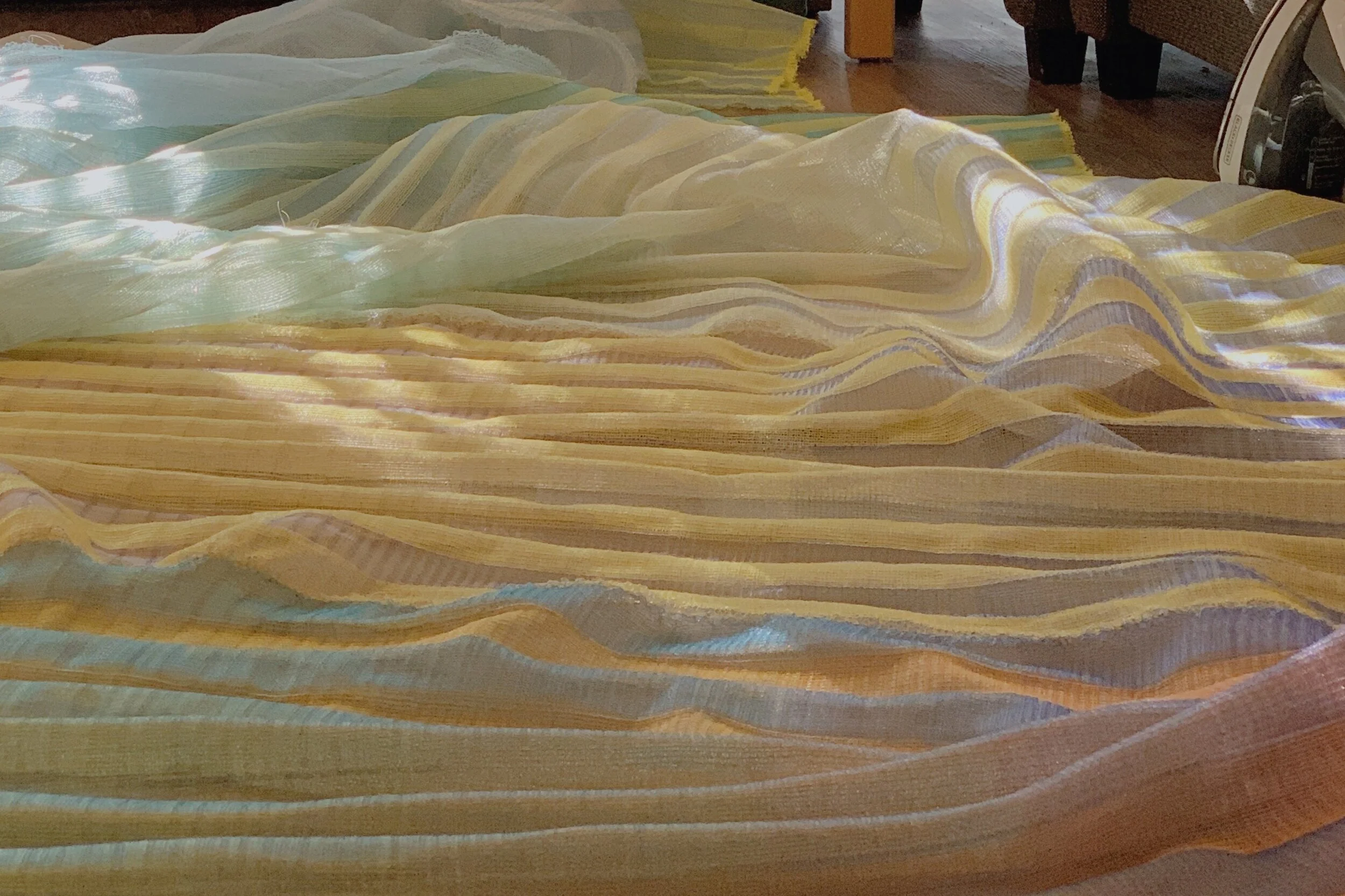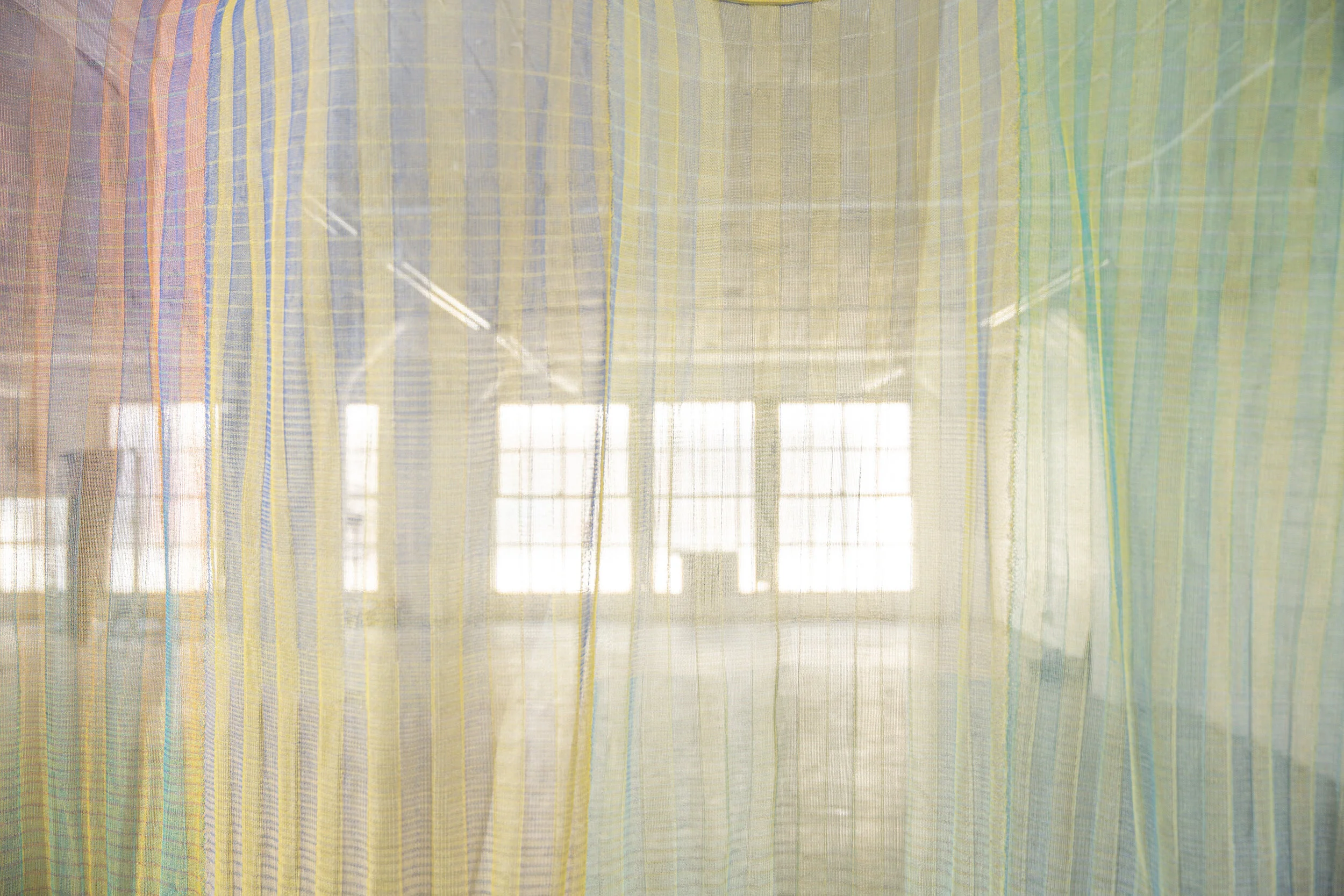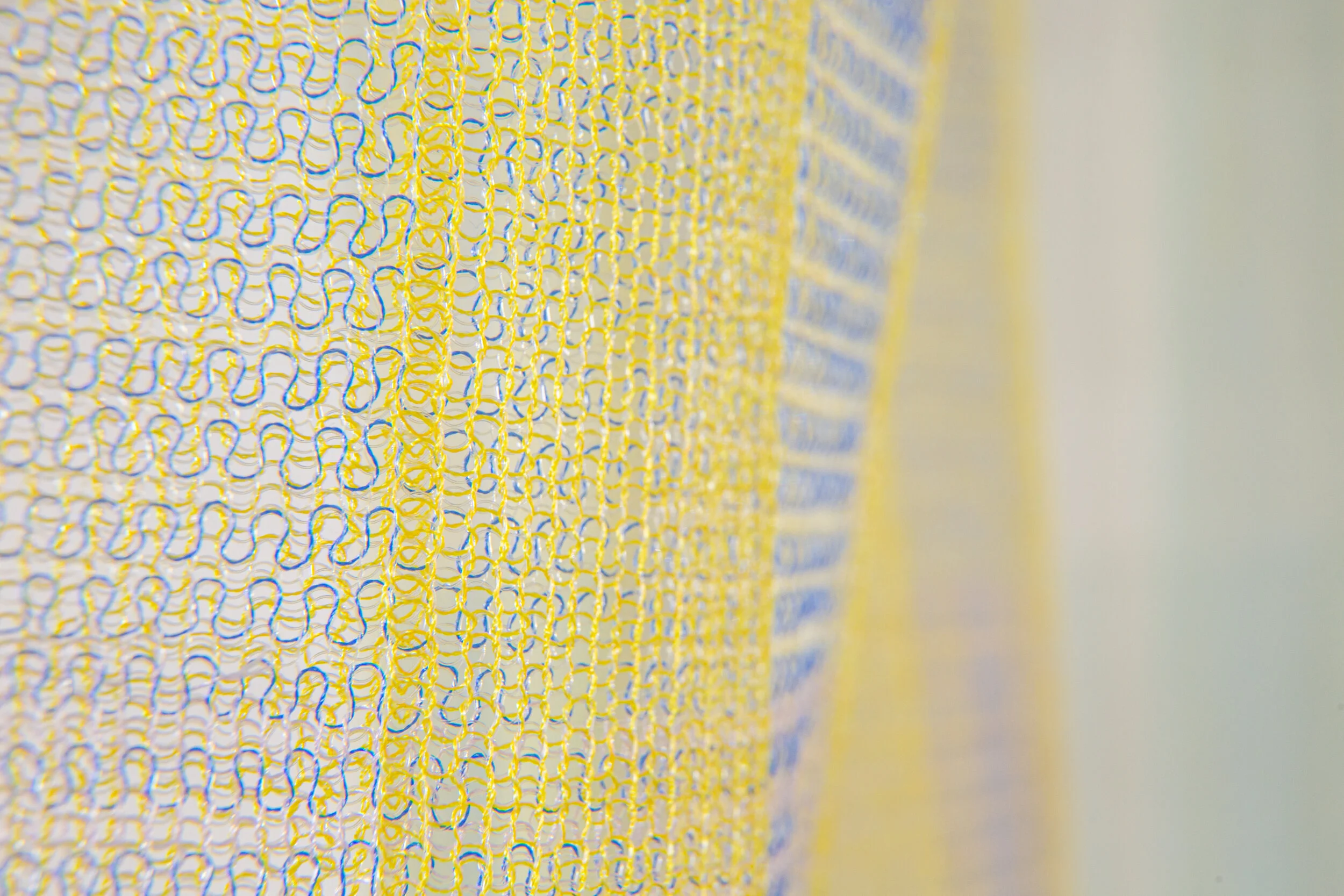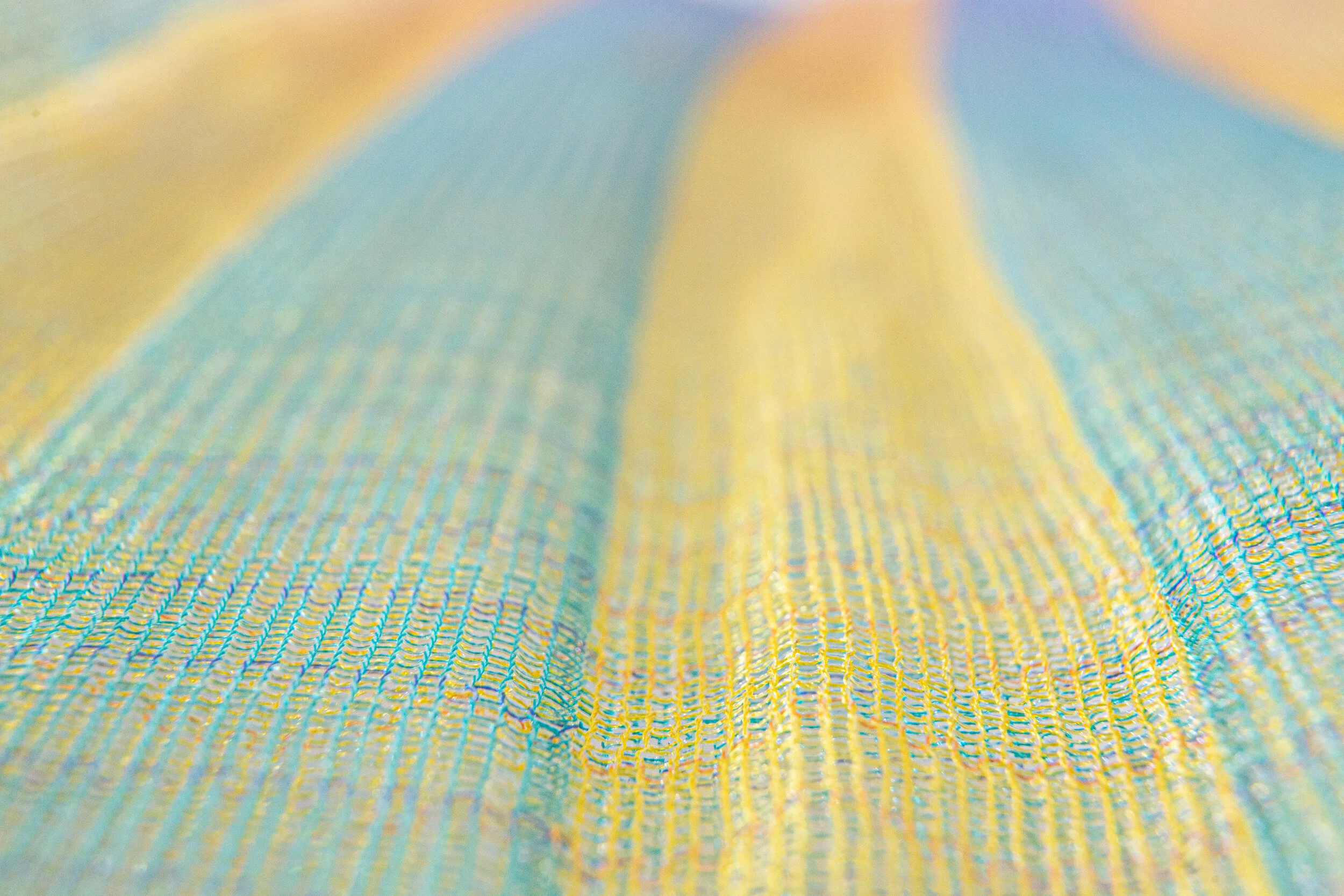Light, especially colors formed through the presence / absence of light are always too ephemeral and intangible.
Part of its beauty is that It’s fleeting, it’s short-lived and it only remains in our minds.
But what if we can capture this beauty as if the time had stopped?
How can I put a brief pause to the passing of light and all of its derivatives through the very nature of textiles?
Understanding that knitting is a versatile structure that has the potential of structure and stability as well as plasticity and malleability through the systematic yet organically interlocking of loops, I wanted to capture the elusive experiences of light in a form of knitted installation.
SKETCH / IDEATION
It all begins with raw sketches of big concepts, which then leads to more-detailed visualization of my thoughts.
I love taking notes - from quickly jotting down simple words to a longer journalling exercise all help me to visualize everything that relates to my general idea.
This process involves researching a breadth of images as well as excerpts in order to grasp a fuller context of my idea. Many times, my personal stories enlarge into a broader social issues and relevant subjects.
SAMPLiNG
The secret to making the perfect textile lies in sampling, sampling, and sampling.
Because knitting has so many unpredictable variants, sampling is the only way to understand the behavior of the specific yarn at a certain tension, structure, material combination, repeat size and scale, and even yarn-positioning on the machine.
When you find the perfect marriage of all the variables, that’s when you can tackle other specifications, such as vertical and horizontal repeats, fine-tuning programming, color allocation, sourcing materials, etc.
In this case, the red-yellow sample sparked the idea of obsessively repeating of vertical columns using tubular knit structure to play on the idea of creating architectural structure through the inherent structure of the knit as well as overlaying of colors through the separate color schemes that are simultaneously knitted on each side of the column.
MOCK-UP
Creating quick mock-ups is a vital part of the process before going into the in-scale stage.
This mock-up sample uses semi-transparent vellum paper and fine wire to mimic the curvature of the entirety of the installation.
It finally brings my sketches and texts to a tangible form in space.
I can then imagine further about how to engineer my textile to be beyond just a fabric surface, but to live as a voluminous form in space.
The mock-up installation is surrounded by pictures of other textile samples to help visualize the wholistic vision I had of this environment.
MATERIALS
As rayon has a natural softness and sheen to it, color gradient was achieved through using hues of blues, greens, reds, and yellows in rayon yarns.
Through its tensile strength and long synthetic filament, nylon was used to give structural integrity while still keeping the lightness and bounciness of the fabric.
CONSTRUCTION
From ideation, sketching, mock-up and countless iterations of programming on computer to sampling on machine, all leads to realization of an idea.
This installation is made up of five 35” panels. Each panel is knitted on the Stoll machine separately, then connected through invisible seaming by hand.
The rigorous yet effortless merge of machine and handiwork is key to this project.
Each side of tubular knit column is constructed with a 2-ply yarn, where 1 ply of nylon is giving structural integrity and 1 ply of rayon is adds sheen and color to the surface.
The tubular knit structure, in which two layers of fabrics are simultaneously knitted, allows two different sets of gradient colors to be knitted against each other. Layer A shifts in color from warm to cool, where as Layer B shifts from cool to warm. This usage of color position through engineering the knit structure creates a color phenomenon to the eyes, like visual illusion or the moire effect.


